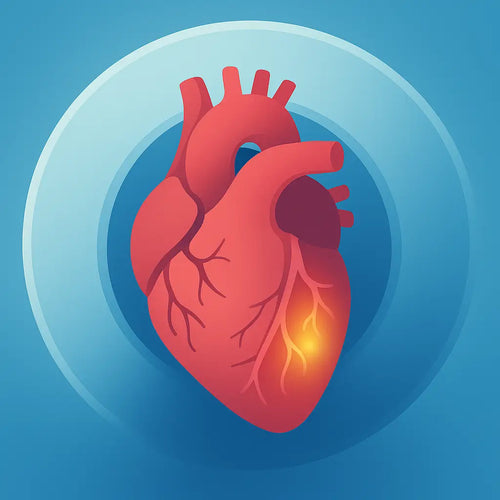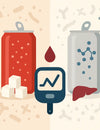Oxidative stress is an important factor in the development of atherosclerosis (buildup in the arteries). For that reason, measuring oxidative stress could be used as a predictor of early atherosclerosis.
This is what was investigated in a study of healthy non-smokers (Ashfaq S, et al. 2006).
Carotid intima-media thickness was measured using ultrasound. This shows the thickness of the blood vessel wall. The results showed that glutathione redox state, a measure of intracellular oxidative stress, was an independent predictor of early atherosclerosis in an otherwise healthy population.
Since oxidized LDL(the so called bad cholesterol) is thought to initiate atherosclerosis, and serum glutathione peroxidase reduces oxidized lipids (fat), this study investigated if higher levels of glutathione peroxidase would reduce cardiovascular mortality (Buijsse B, et al. 2012). It was found that the individuals with both low HDL(the so called good cholesterol), and low glutathione peroxidase had a markedly increased risk for death from cardiovascular disease.
What about people who already have coronary artery disease?
When 636 patients with suspected coronary artery disease were followed for an average time of 4.7 years, it was found that glutathione peroxidase activity was among the strongest predictors of the risk of cardiovascular events (Blankenberg S, et al. 2003).
The researchers concluded that increasing glutathione peroxidase activity might lower the risk for cardiovascular events.
Taking glutathione in a form the body can use seems to be a really good idea since we know that the body will produce less of it’s own glutathione as we get older.
When we get into our forties and especially late forties it becomes more and more important to do this as we age.
Ashfaq S1, Abramson JL, Jones DP, Rhodes SD, Weintraub WS, Hooper WC, Vaccarino V, Harrison DG, Quyyumi AA. The relationship between plasma levels of oxidized and reduced thiols and early atherosclerosis in healthy adults. J Am Coll Cardiol. 2006 Mar 7;47(5):1005-11. Epub 2006 Feb 9.
Blankenberg S1, Rupprecht HJ, Bickel C, Torzewski M, Hafner G, Tiret L, Smieja M, Cambien F, Meyer J, Lackner KJ; AtheroGene Investigators. Glutathione peroxidase 1 activity and cardiovascular events in patients with coronary artery disease. N Engl J Med. 2003 Oct 23;349(17):1605-13.
Buijsse B1, Lee DH, Steffen L, Erickson RR, Luepker RV, Jacobs DR Jr, Holtzman JL. Low serum glutathione peroxidase activity is associated with increased cardiovascular mortality in individuals with low HDLc’s. PLoS One. 2012;7(6):e38901. doi: 10.1371/journal.pone.0038901. Epub 2012 Jun 15.
Effective S-Acetyl Glutathione

Glutathione is your primary defense against aging.
It’s a very effective antioxidant the body makes to protect itself from free radical damage (oxidative stress). It can help repair cells that are damaged by stress, radiation, pollution, infection, and other illnesses.
Glutathione helps your cells function, and supports a healthy immune system. Research shows that glutathione deficiency can lead to increased susceptibility to diseases such as cancer, Parkinson’s disease and Alzheimer’s disease.









